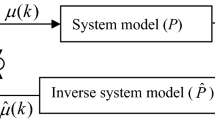Abstract
The huge plastic deformation is the characteristic of the underground roadways in coal mine. Therefore, to compute the stability of underground roadways, a elastic–plastic constitutive model of surrounding rock must be obtained. Many elastic–plastic constitutive models for rock mass have been proposed. In this study, a generalized constitutive law for an elastic–plastic constitutive model is applied. Using this generalized constitutive law, the problem of model identification is transformed to a problem of parameter back analysis, which is a typical and complicated optimization. To improve the efficiency of the traditional optimization method, a black hole algorithm is applied in this study. Combining the generalized constitutive law for an elastic–plastic constitutive model and black hole algorithm, a new back analysis method for model identification of rocks surrounding underground roadways in coal mine is proposed. Using this new method, the elastic–plastic constitutive models for two underground roadways in Huainan coal mine has been back-calculated. The results are compared with those of traditional genetic algorithm, fast genetic algorithm and immune continuous ant colony algorithm, that proposed in previous studies. The results show that the new model back analysis algorithm can significantly improve the computation efficiency and the computation effect, and is a very good method for back analysis the rock model surrounding underground roadways in coal mine.

















Similar content being viewed by others
References
Gao W, Liu QS (2009) Back analysis for underground engineering based on bionics computation intelligence. Science Press, Beijing (in Chinese)
Gioda G, Sakurai S (1987) Back analysis procedures for the interpretation of field measurements in geomechanics. Int J Num Anal Methods Geomech 11:555–583
Sakurai S (1997) Lessons learned from field measurement in tunnelling. Tunn Undergr Space Technol 20:453–460
Liu BG (2011) Visco-elastical constitutive model identification of rock mass. In: Cai MF (ed) Rock mechanics: achievements and ambitions. CRC, Boca Raton, pp 139–144
Wang ZC, Luo YS, Tang SH, Yu M, Li QM (2007) Identification technology based on constitutive model database of geotechnical material. J Cent South Univ Technol 14:s458–461
Yang HT, Wang K (2009) Combined identification of constitutive parameters and in situ stresses for an elastic Cosserat model of an excavation in a layered rock mass. Int J Rock Mech Min Sci 46:659–664
Kowalczyk T, Furukawa T, Yoshimura S, Yagawa G (1998) An extensible evolutionary algorithm approach for inverse problems. Inverse problems in engineering mechanics. Elsevier, Oxford, pp 541–550
Su GS, Zhang XF, Chen GQ, Fu XY (2008) Identification of structure and parameters of rheological constitutive model for rocks using differential evolution algorithm. J Cent South Univ Technol 15:s25–28
Feng XT, Chen BR, Yang CX, Zhou H, Ding XL (2006) Identification of visco-elastic models for rocks using genetic programming coupled with the modified particle swarm optimization algorithm. Int J Rock Mech Min Sci 43:789–801
Meier J, Datcheva M, Schanz T (2007) Identification of constitutive and geometrical parameters of numerical models with application in tunnelling. In: Eberhardsteiner (ed) ECCOMAS thematic conference on computational methods in tunnelling (EURO:TUN 2007), Vienna
Sha SJ, Hao X, Zhai SH (2011) Constitutive model identification of rock based on artificial intelligence. Adv Mater Res 368–373:2509–2516
Surajit P, Wathugala GW (1996) Calibration of a constitutive model using genetic algorithms. Comput Geotech 19:325–348
Gao W (2007) Identification of geo-material rheological constitutive model based on fast-convergent genetic algorithm. J. Cent. South Univ. Technol. 14:s22–26
Gao W (2015) Identification of Constitutive Model for Rock Materials Based on Immune Continuous Ant Colony Algorithm. Mater Res Innov 19:311–315
Yang Q, Zhang JM, Zheng H, Yao YP (2013) Constitutive modeling of geomaterials: advances and new applications. Springer, Berlin
Nakai Teruo (2012) Constitutive modeling of geomaterials: principles and applications. CRC, Boca Raton
Zheng YR, Shen ZJ, Gong XN (2002) Generalized plastic mechanics-the principles of geotechnical plastic mechanics. China Architecture and Building, Beijing (in Chinese)
Koichi H (2009) Elastoplasticity Theory. Springer, Berlin
Pickover C (1998) Black holes: a travelers guide. Wiley, New Jersey
Hatamlou A (2013) Black hole: a new heuristic optimization approach for data clustering. Inf Sci 222:175–184
Kumar S, Datta D, Singh SK (2015) Black hole algorithm and its applications. In: Azar AT, Vaidyanathan S (eds) Computational intelligence applications in modeling and control. Springer, Cham, pp 147–170
Liu QS, Gao W, Yuan L (2010) Stability control theory and supporting technology and application for deep coal mine rock roadway. Science, Beijing (in Chinese)
Gao W, Yin ZX (2011) Modern Intelligent Bionics Algorithm and Its Applications. Science, Beijing (in Chinese)
Acknowledgments
The financial supports from The Fundamental Research Funds for the Central Universities under Grant Nos. 2014B17814, 2014B07014 and 2014B04914 are all gratefully acknowledged.
Author information
Authors and Affiliations
Corresponding author
Rights and permissions
About this article
Cite this article
Gao, W., Ge, M., Chen, D. et al. Back analysis for rock model surrounding underground roadways in coal mine based on black hole algorithm. Engineering with Computers 32, 675–689 (2016). https://doi.org/10.1007/s00366-016-0445-2
Received:
Accepted:
Published:
Issue Date:
DOI: https://doi.org/10.1007/s00366-016-0445-2




